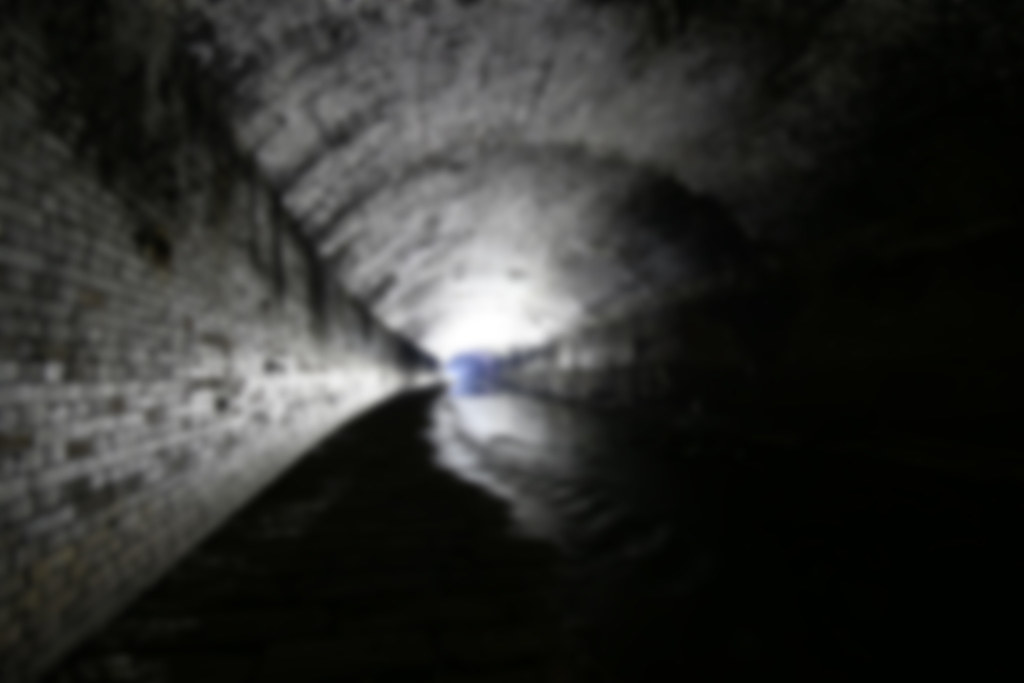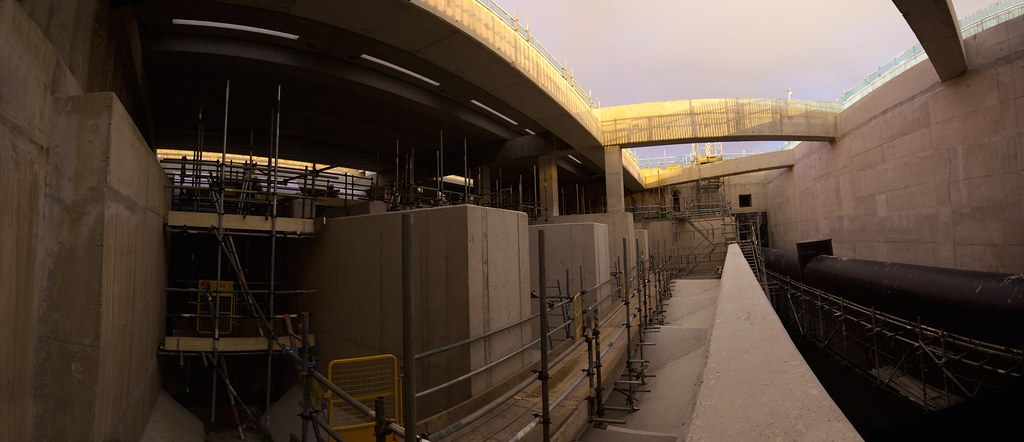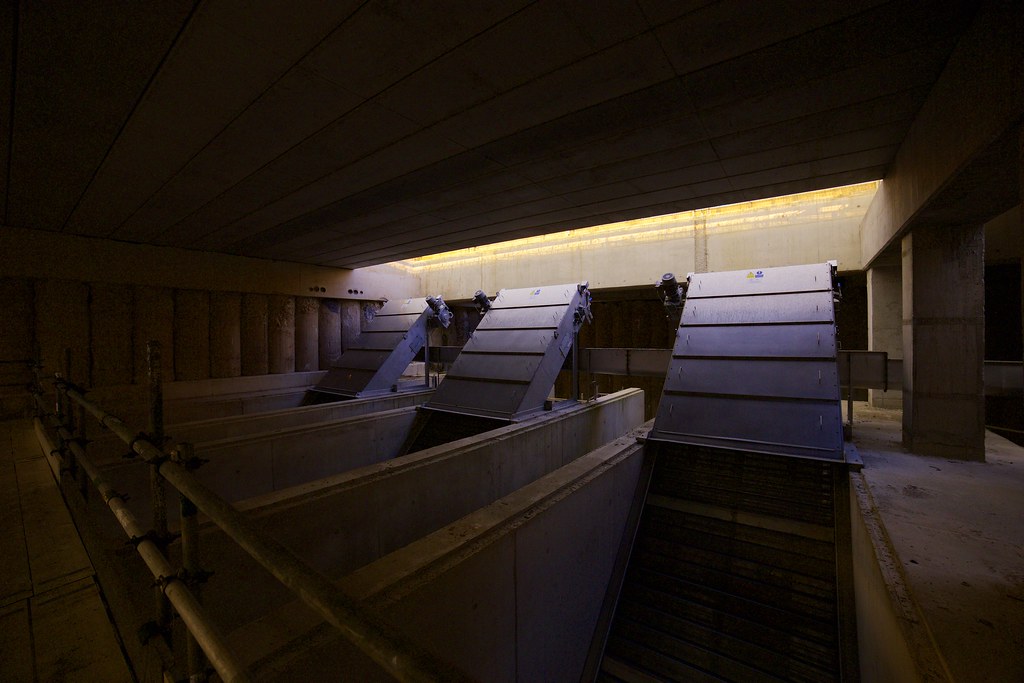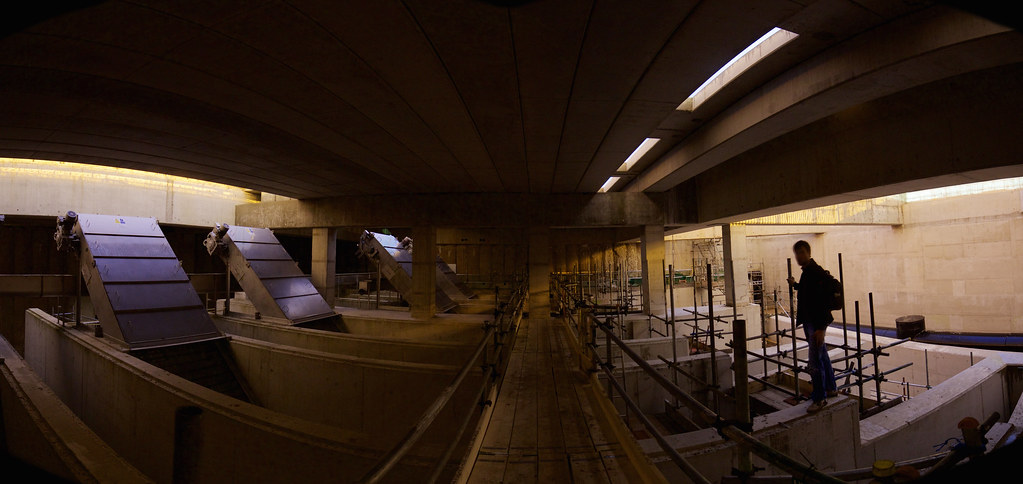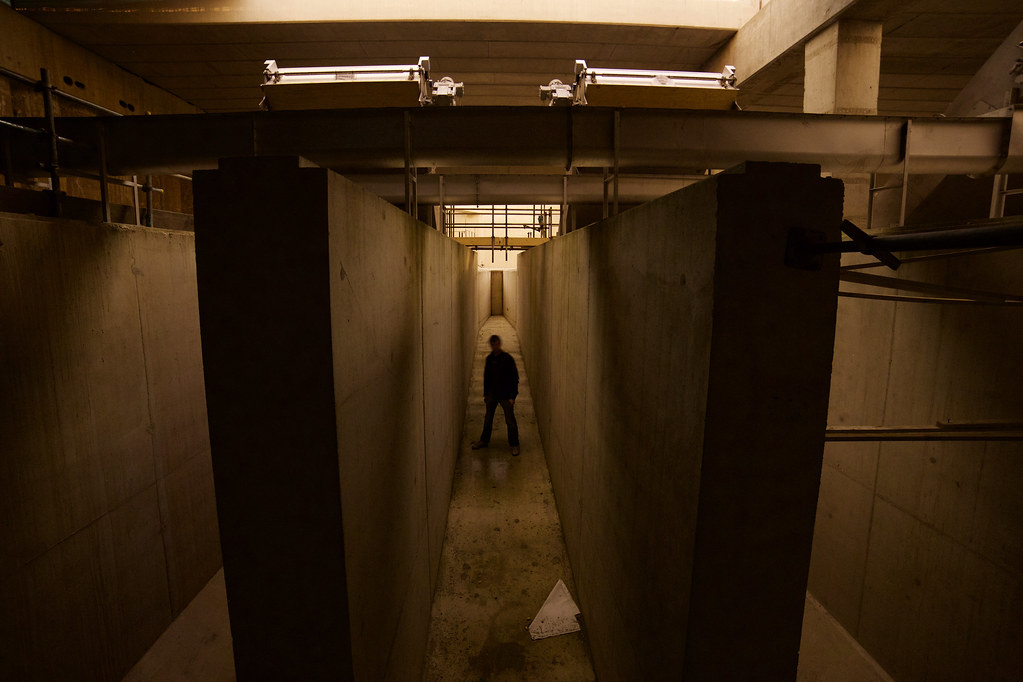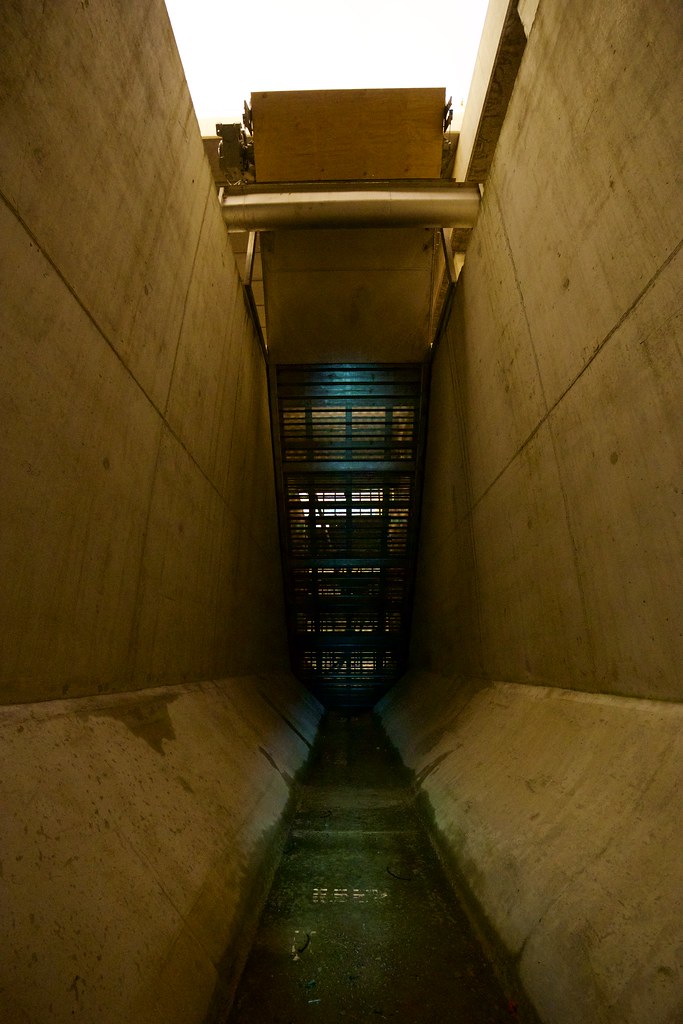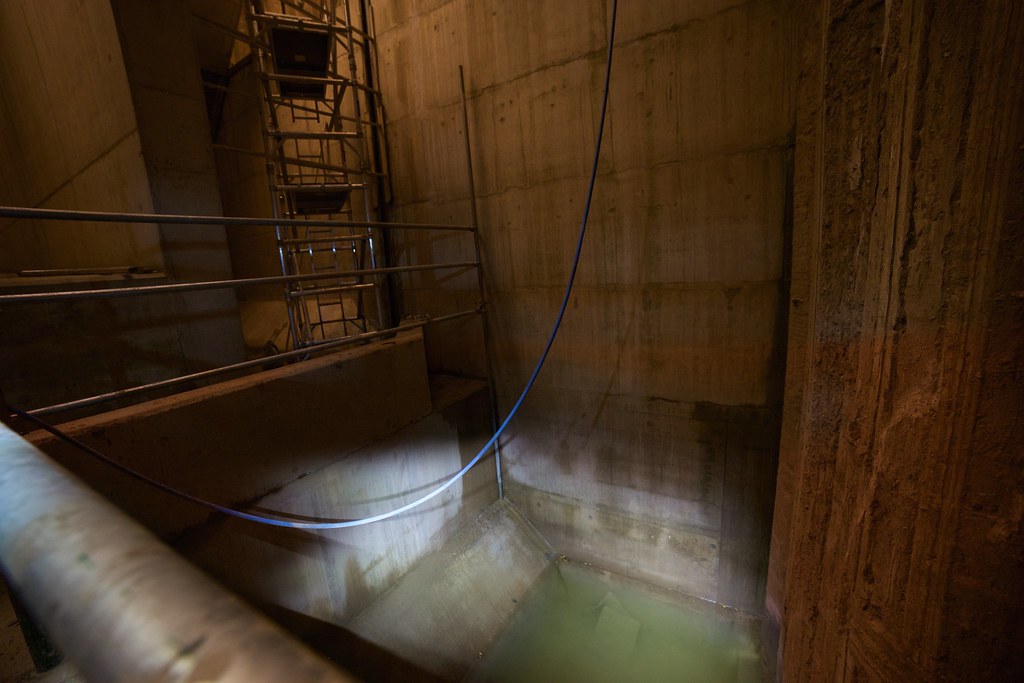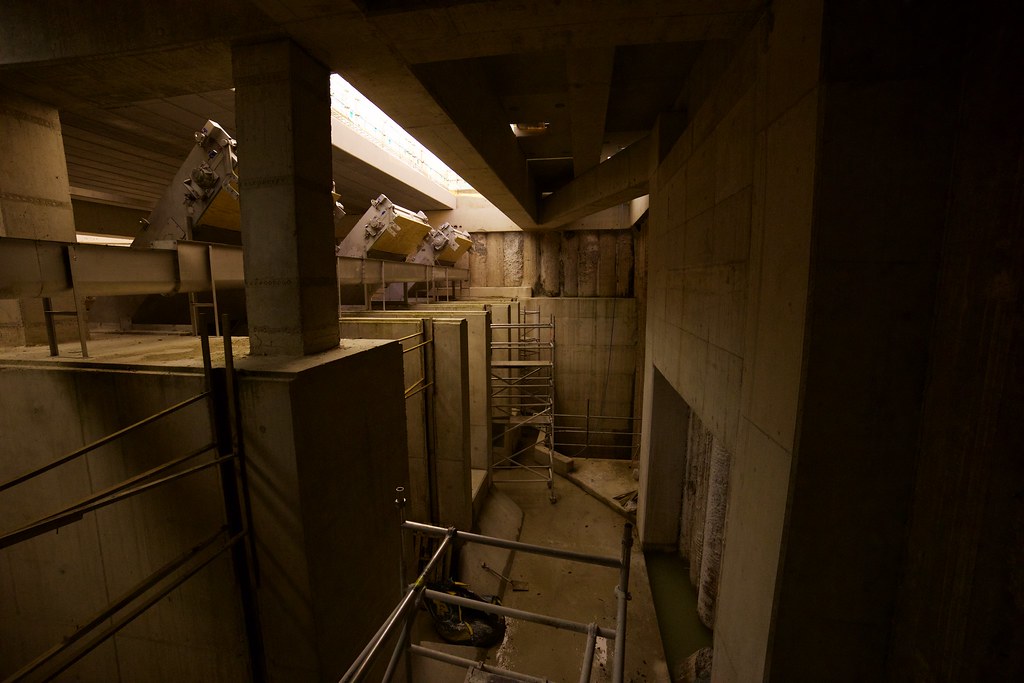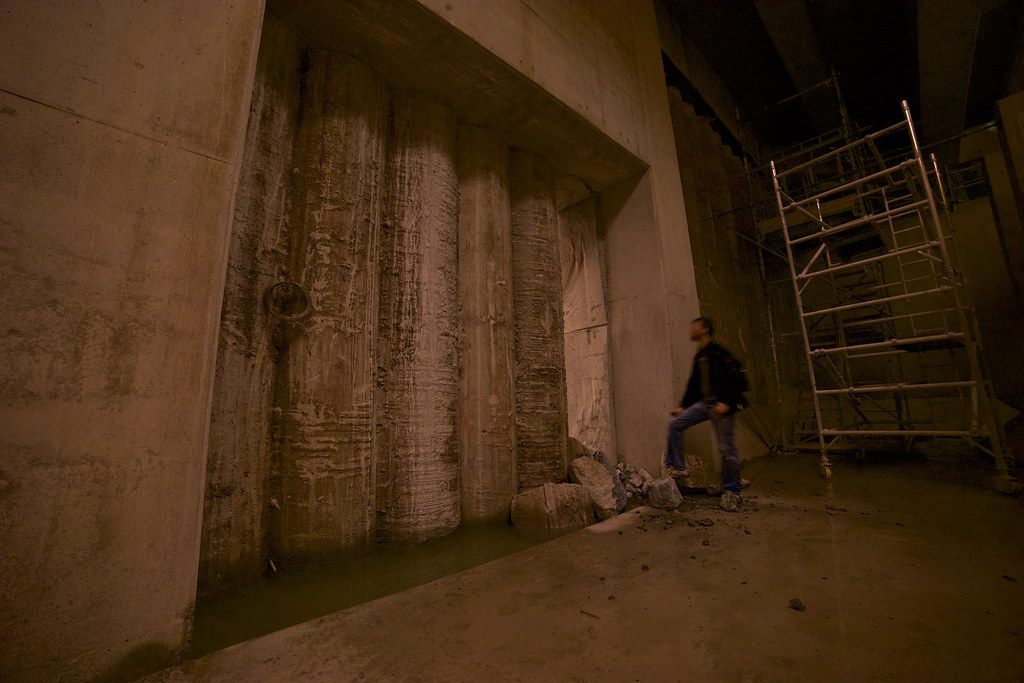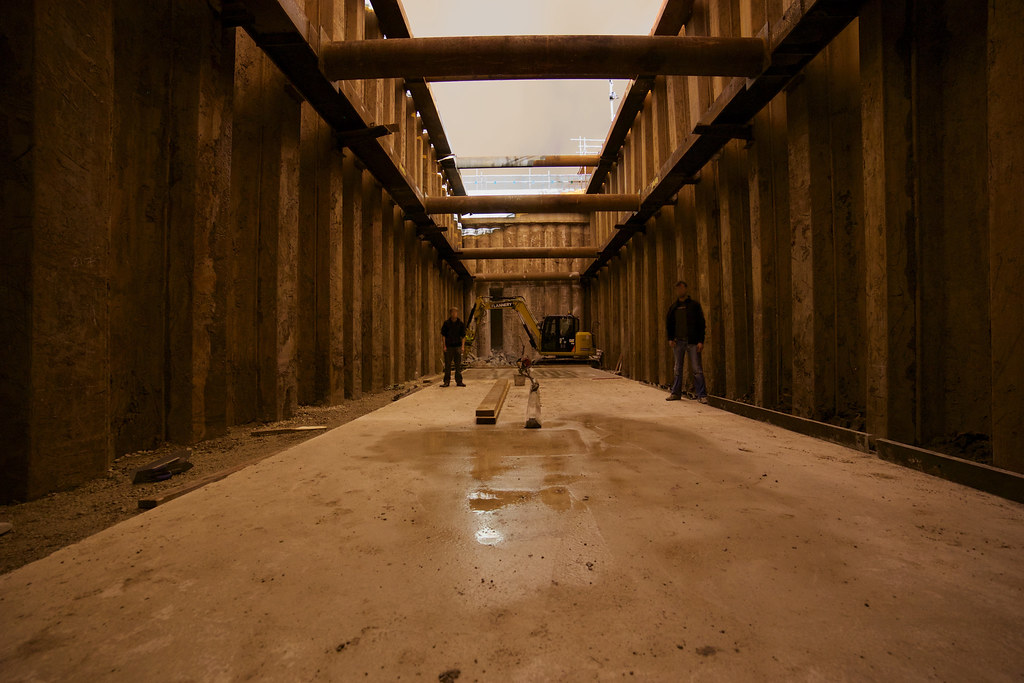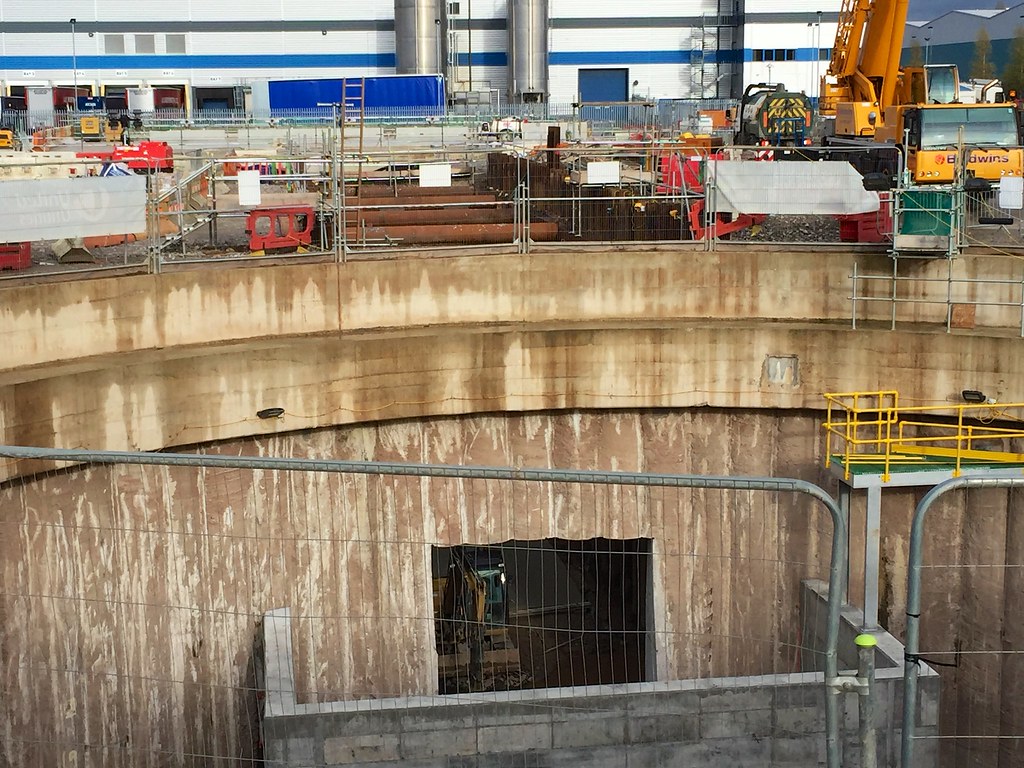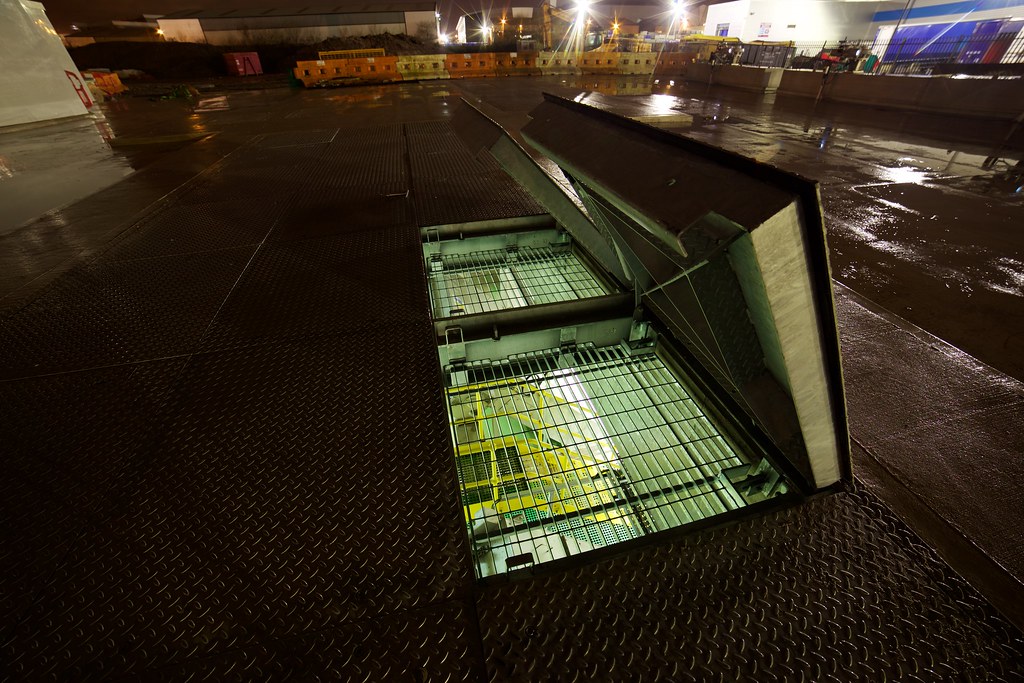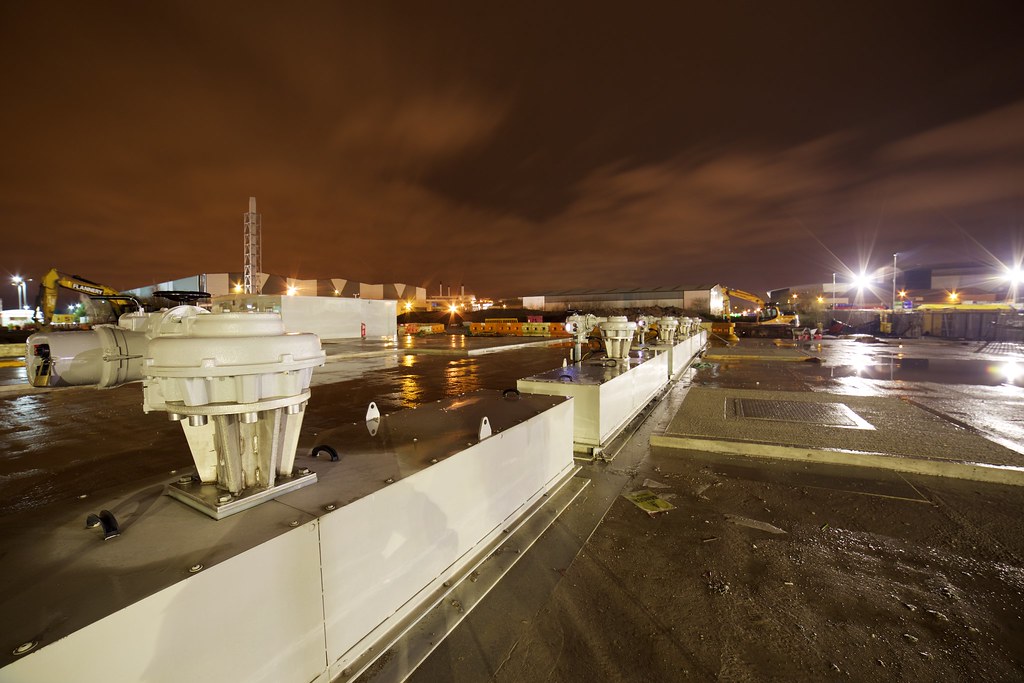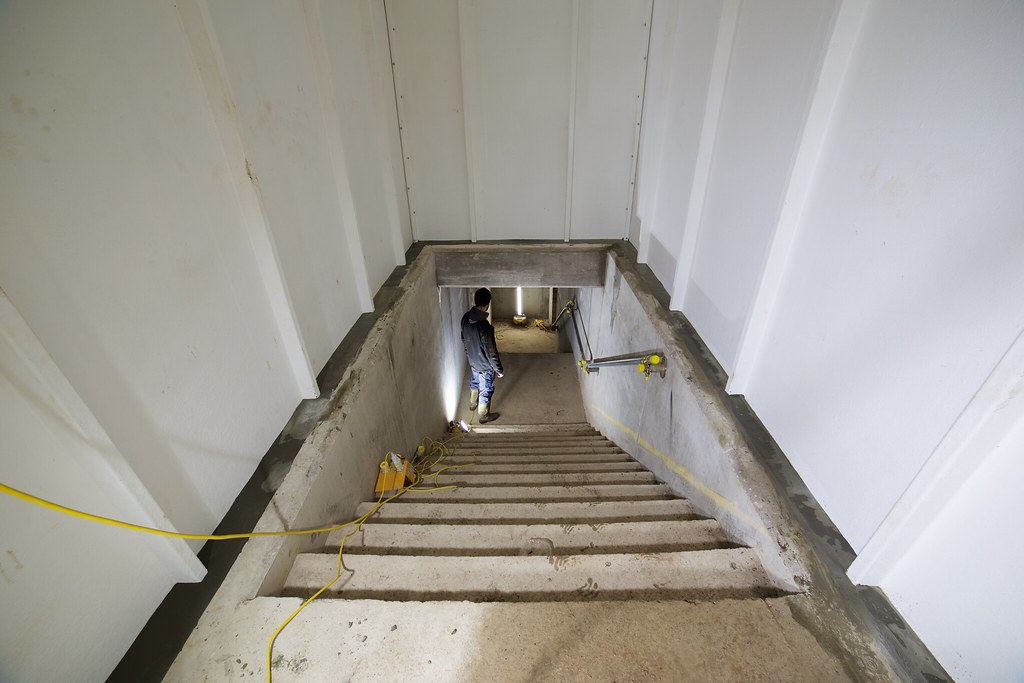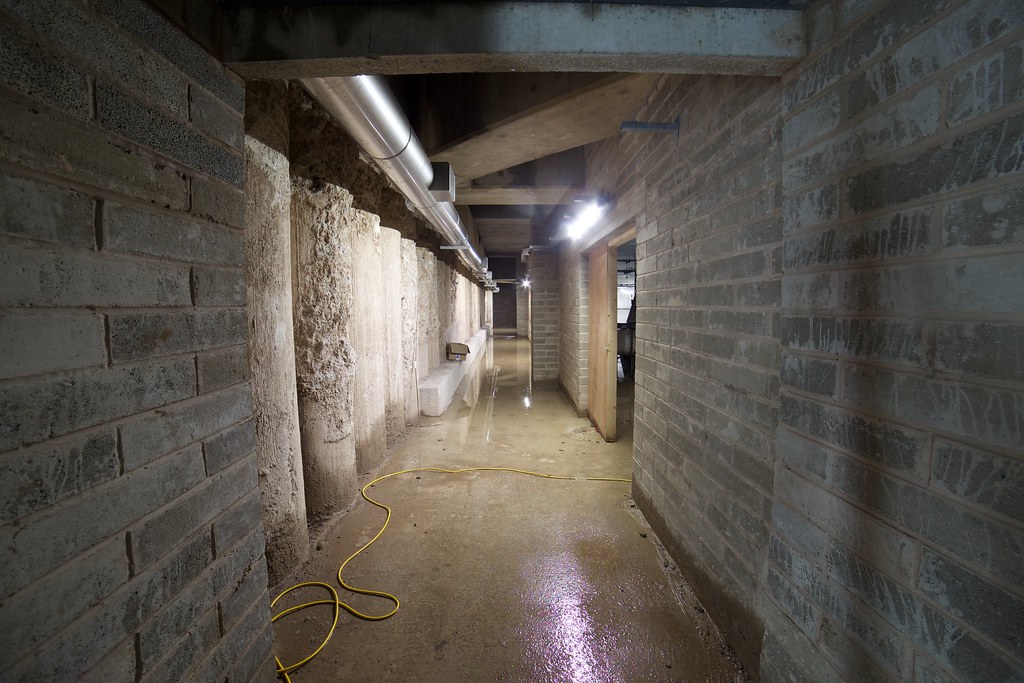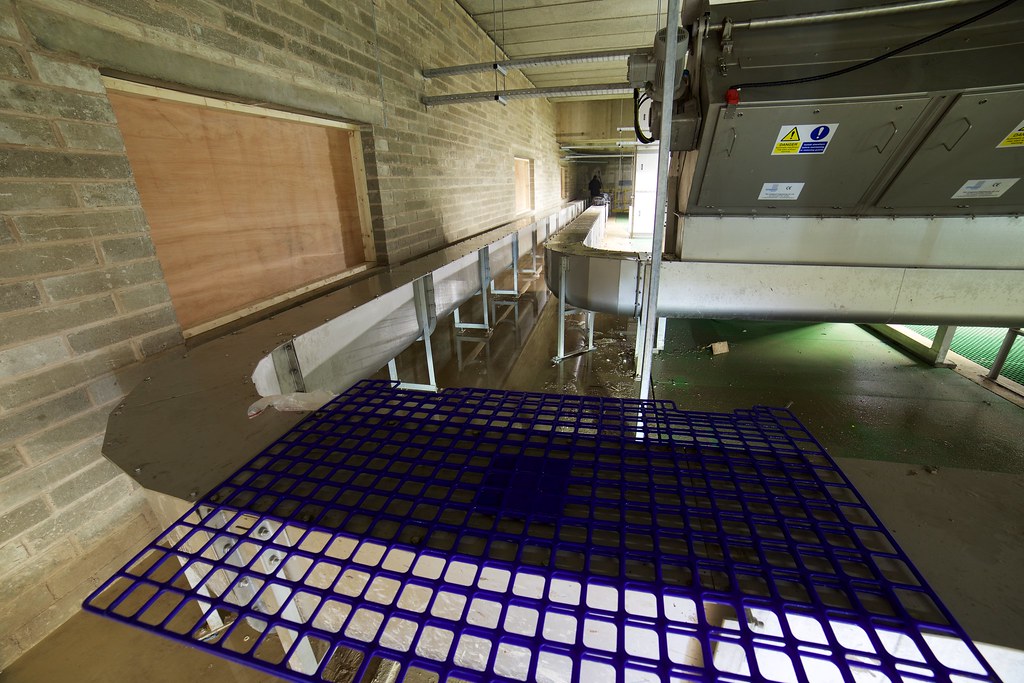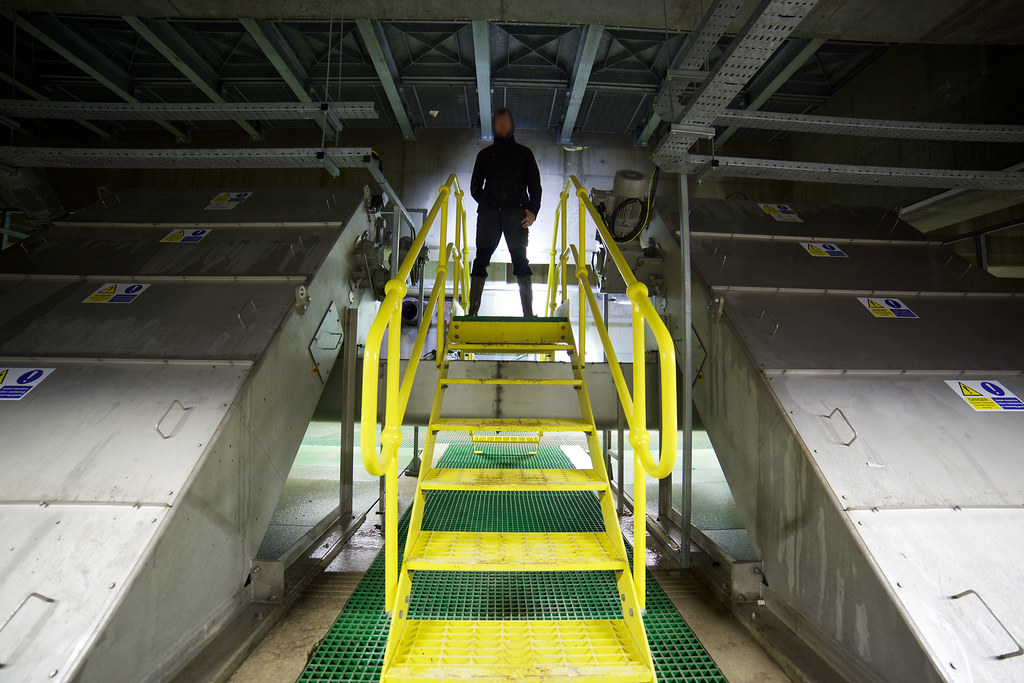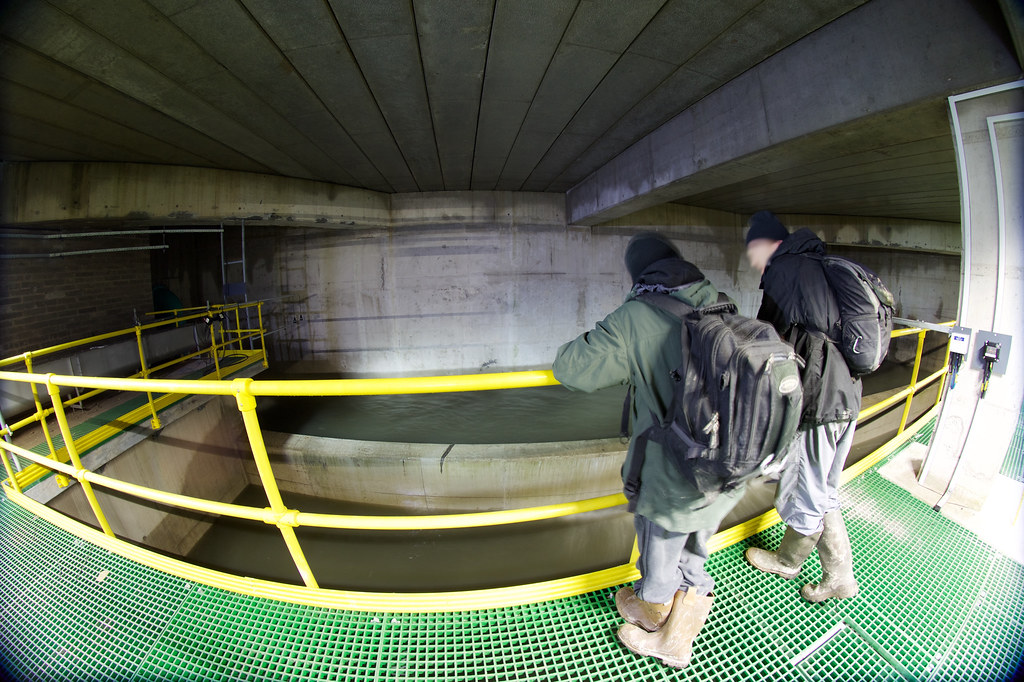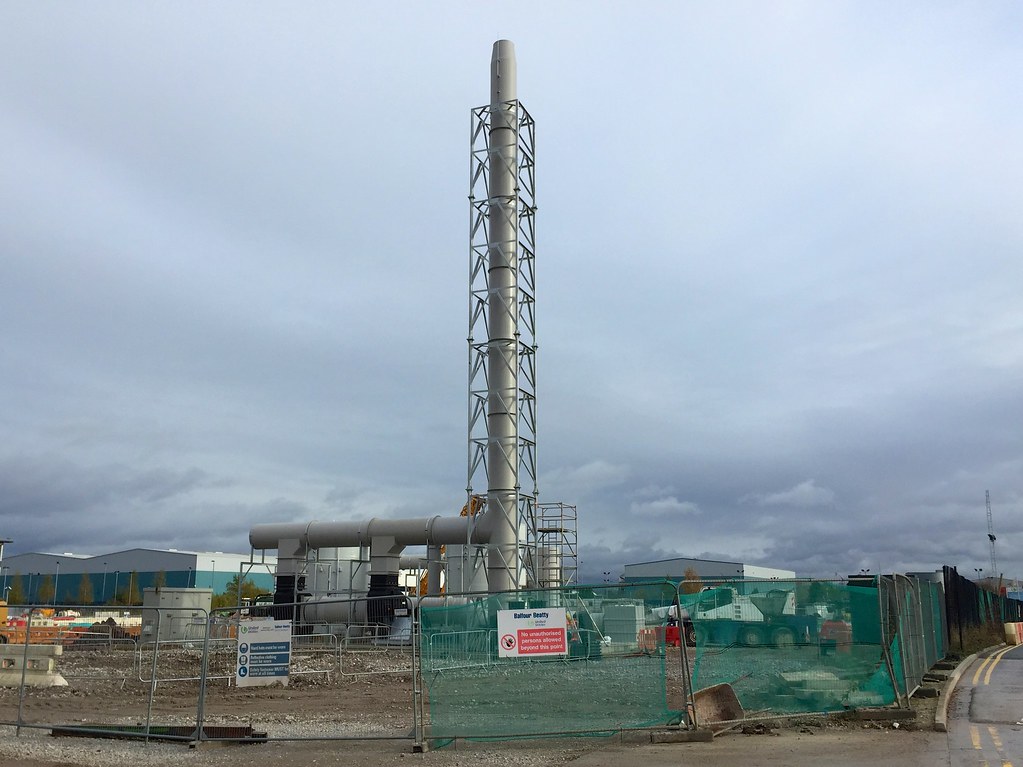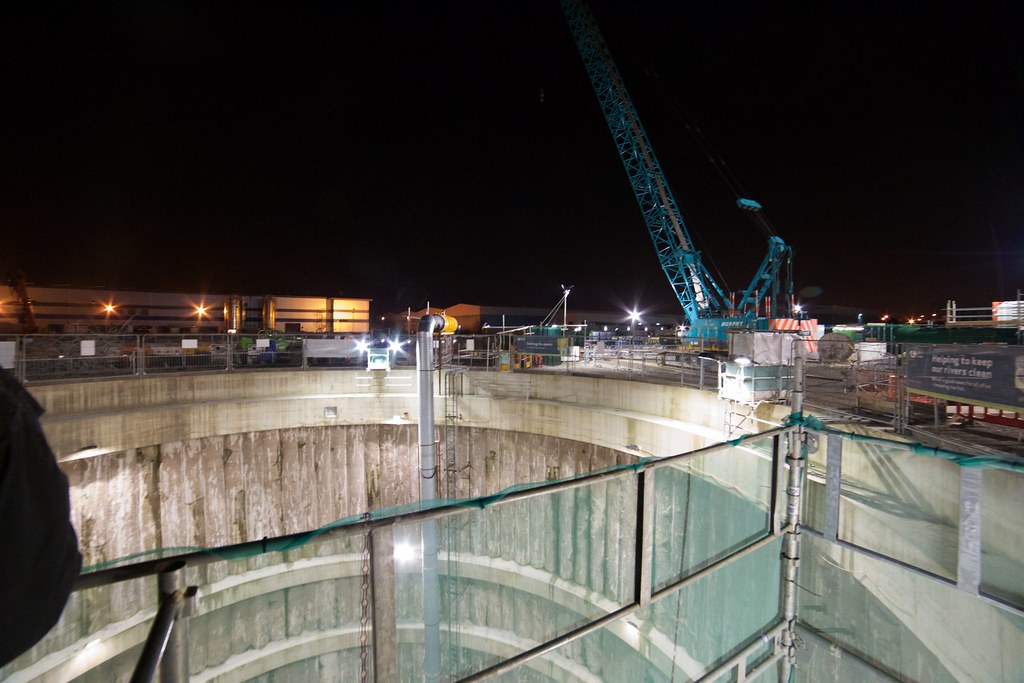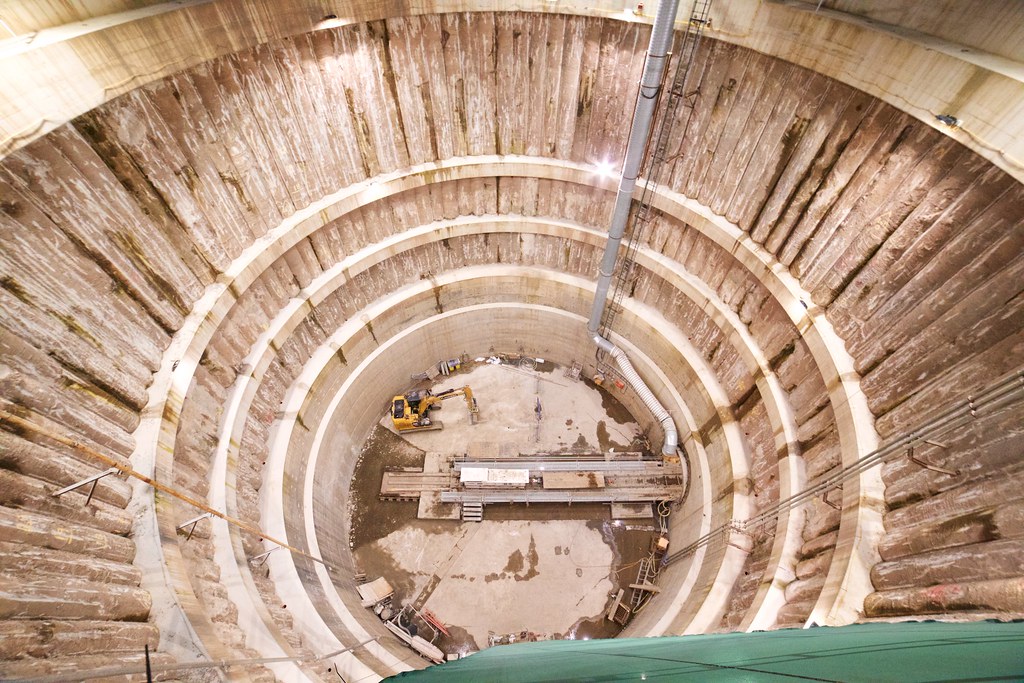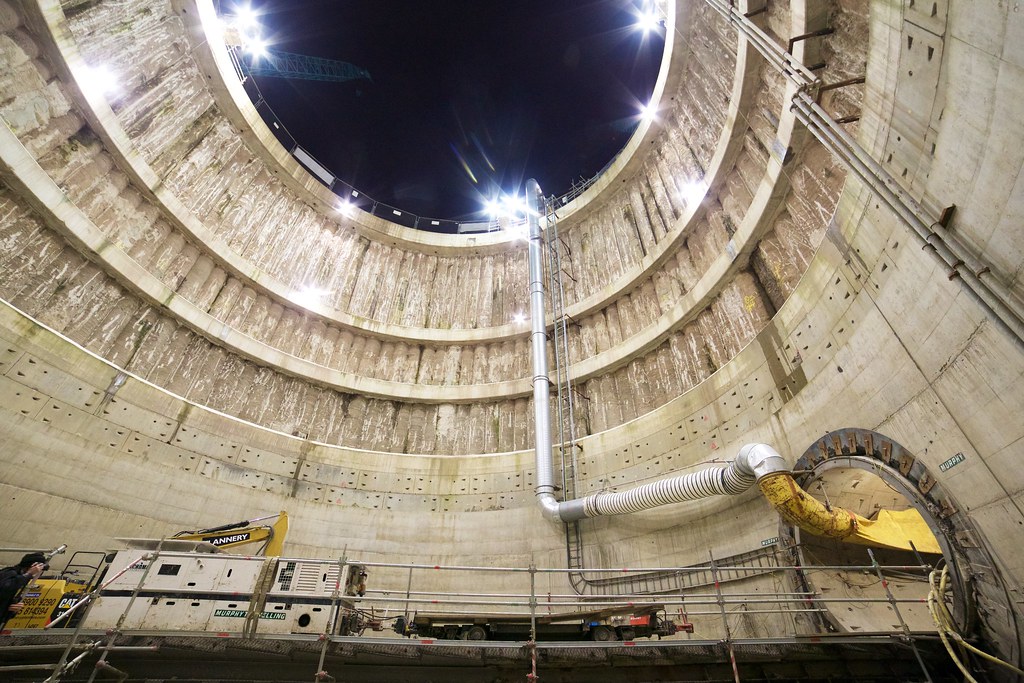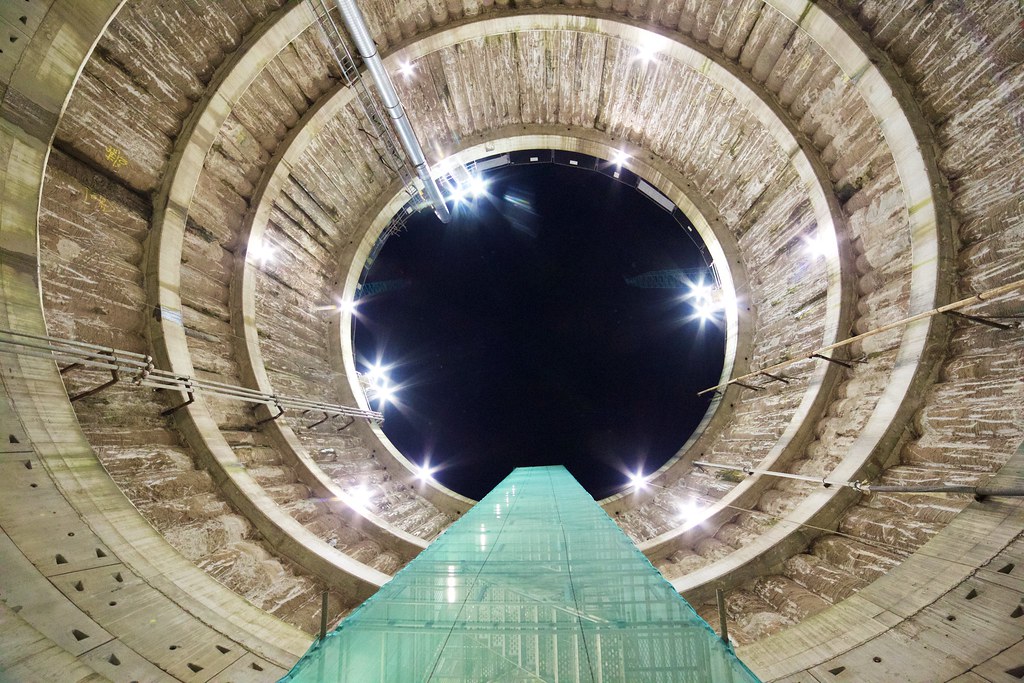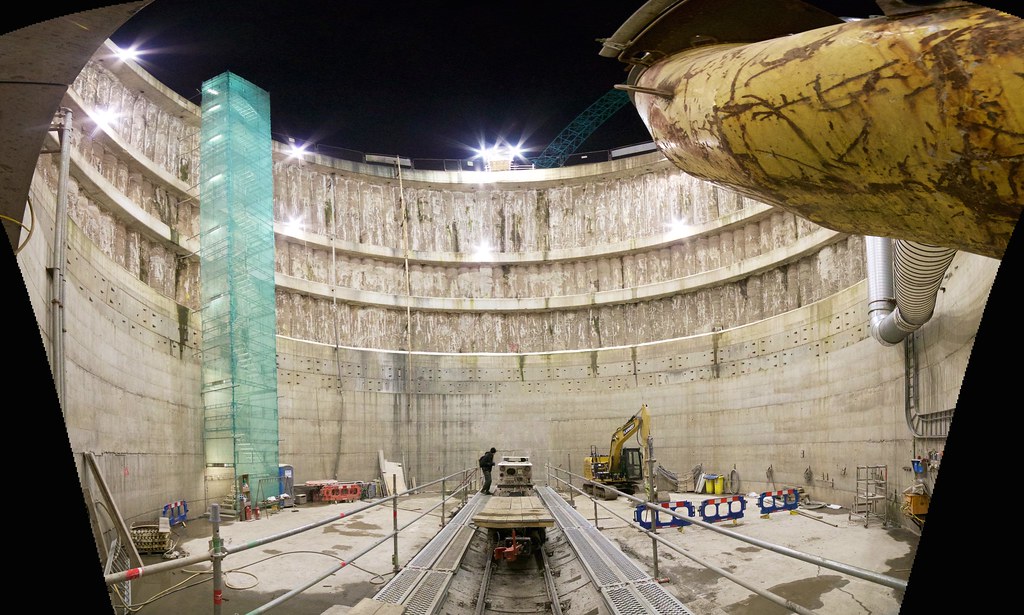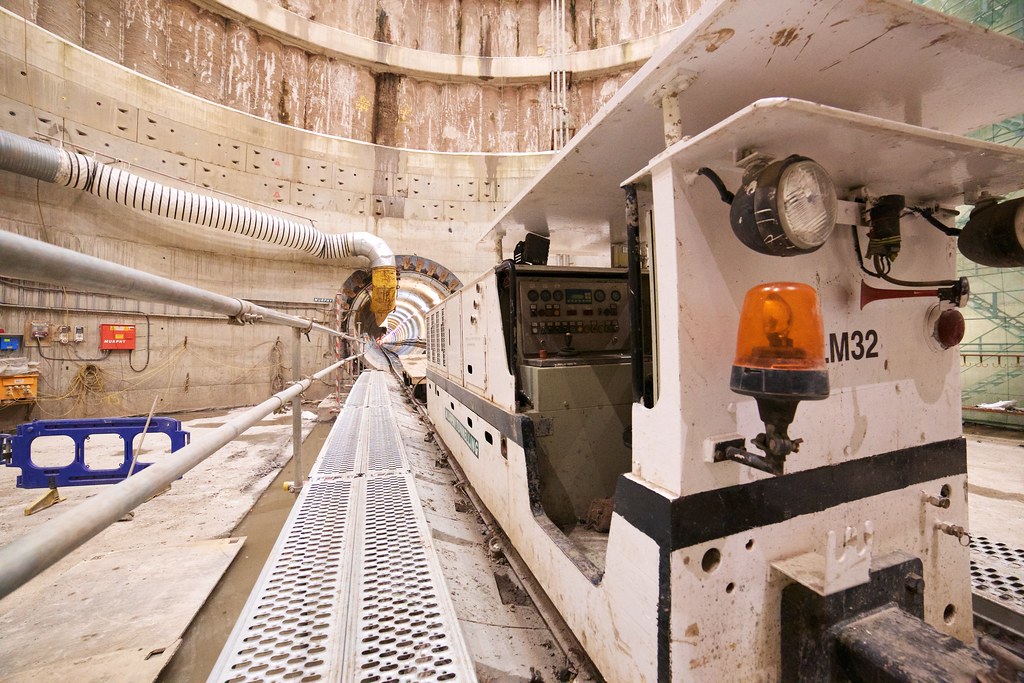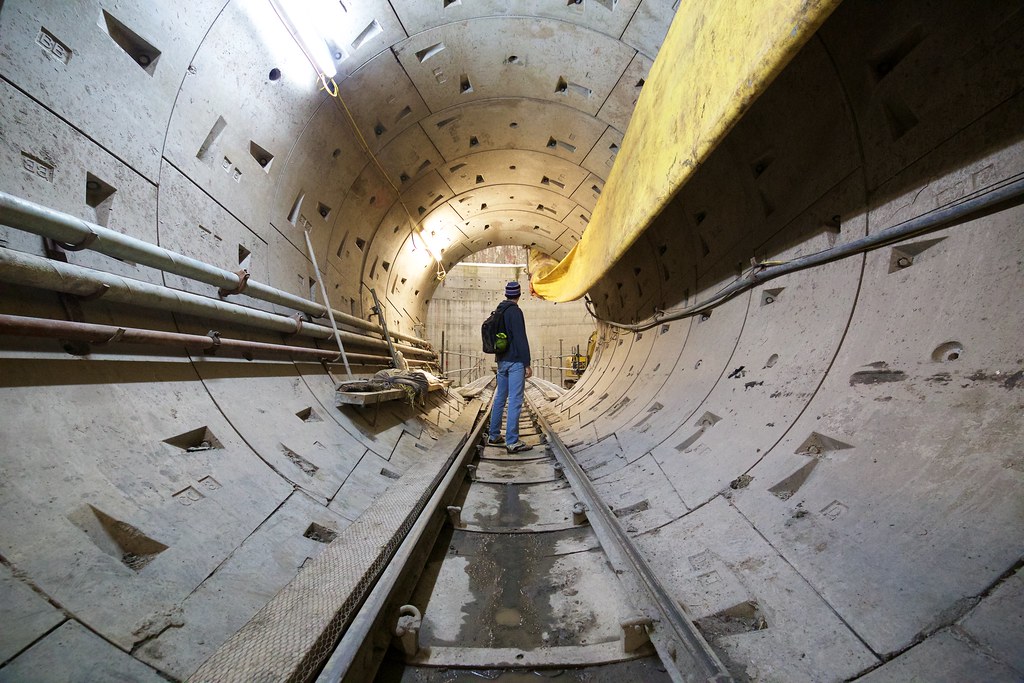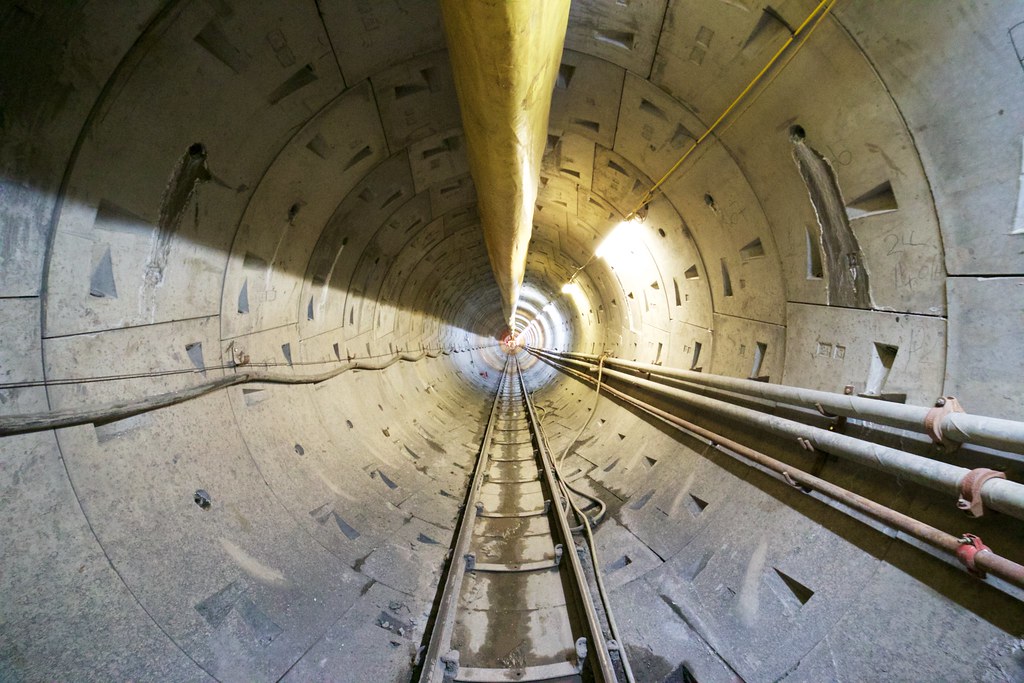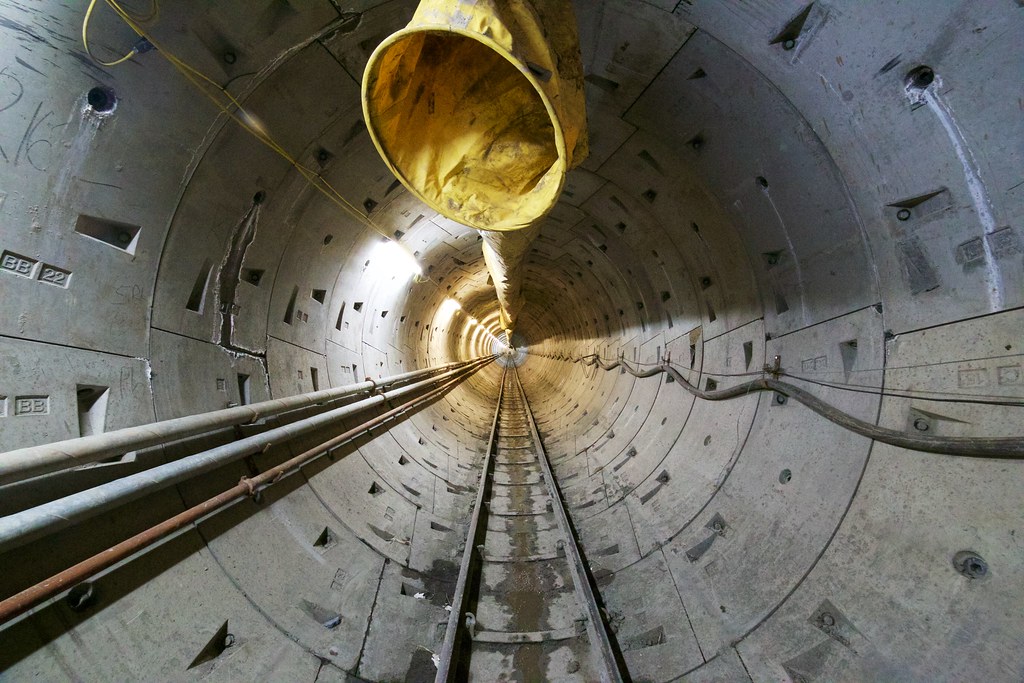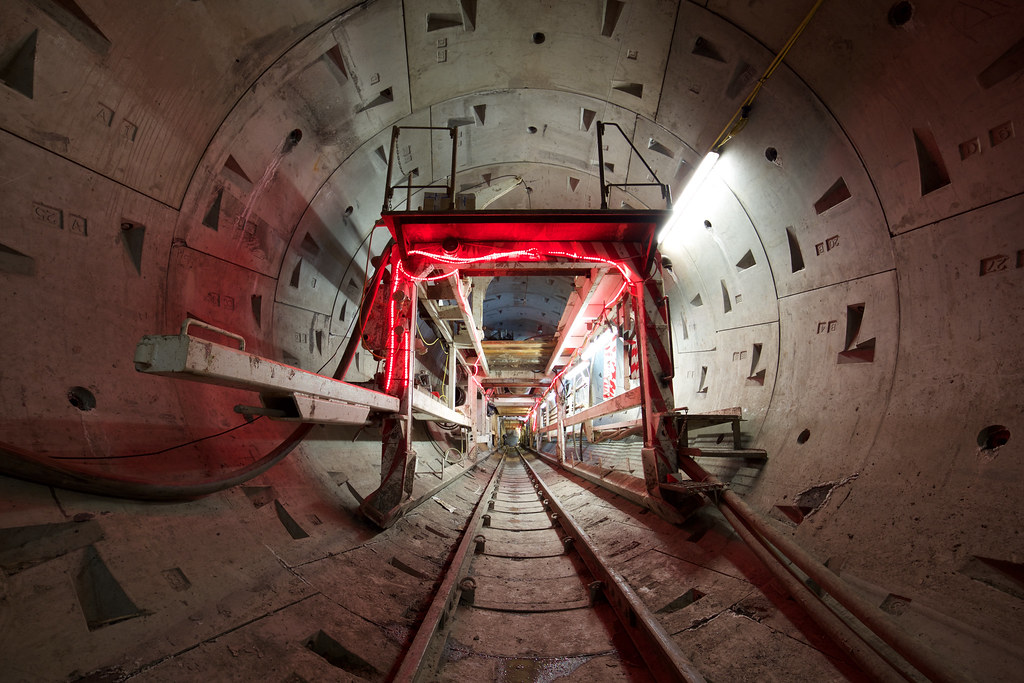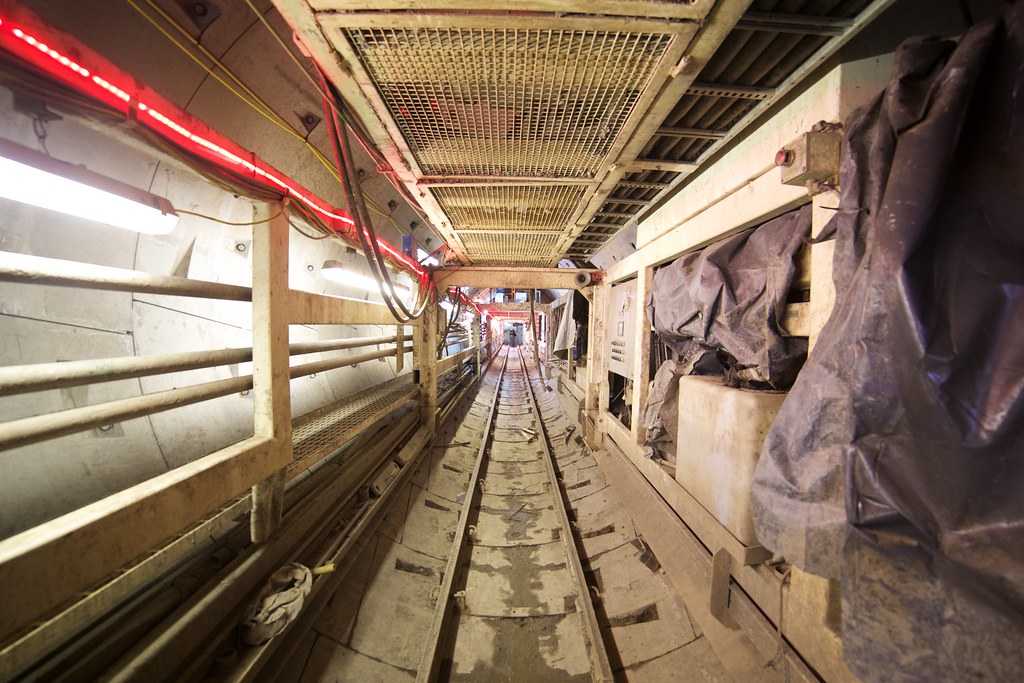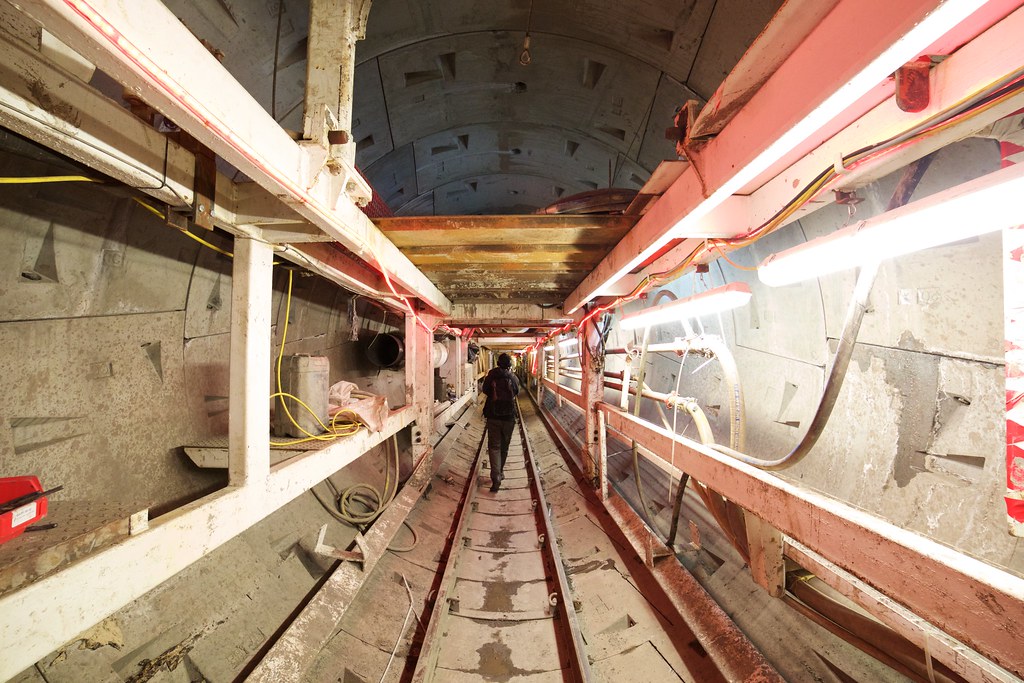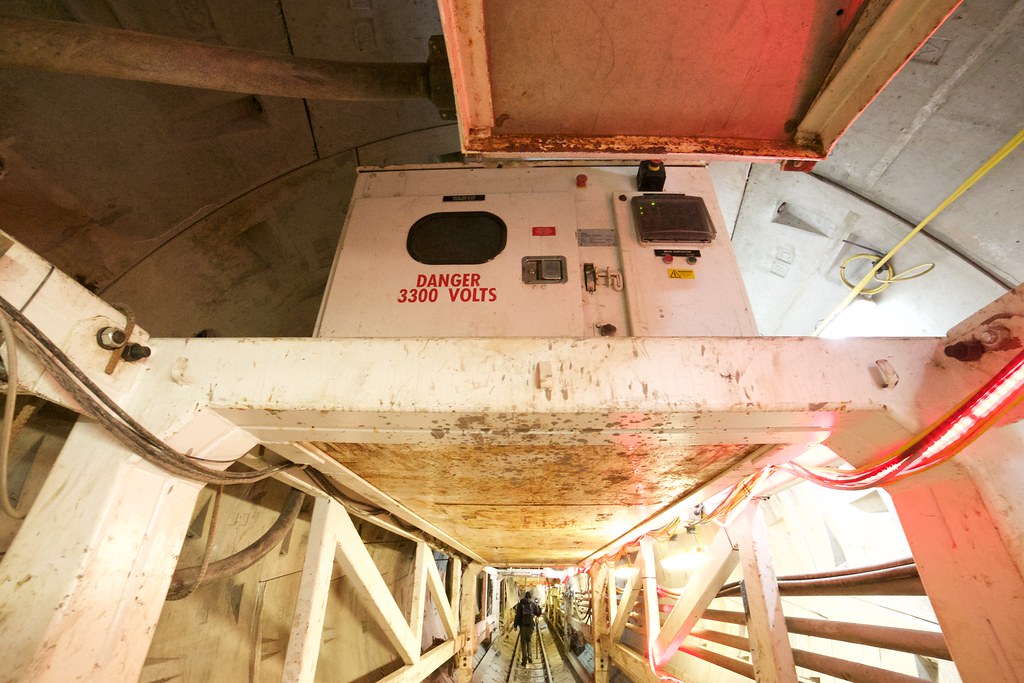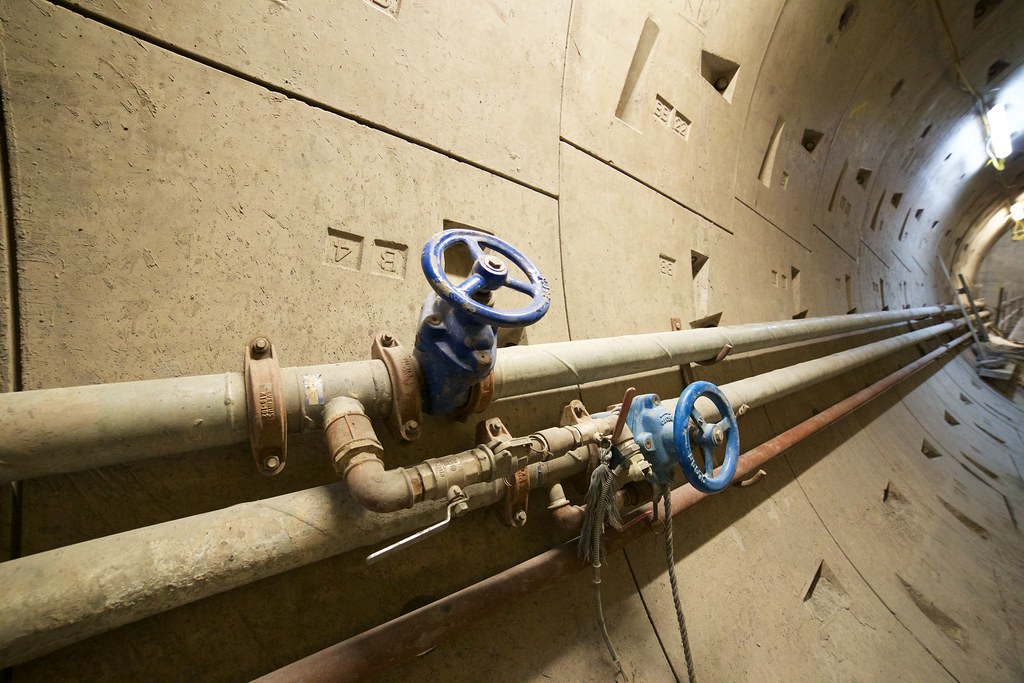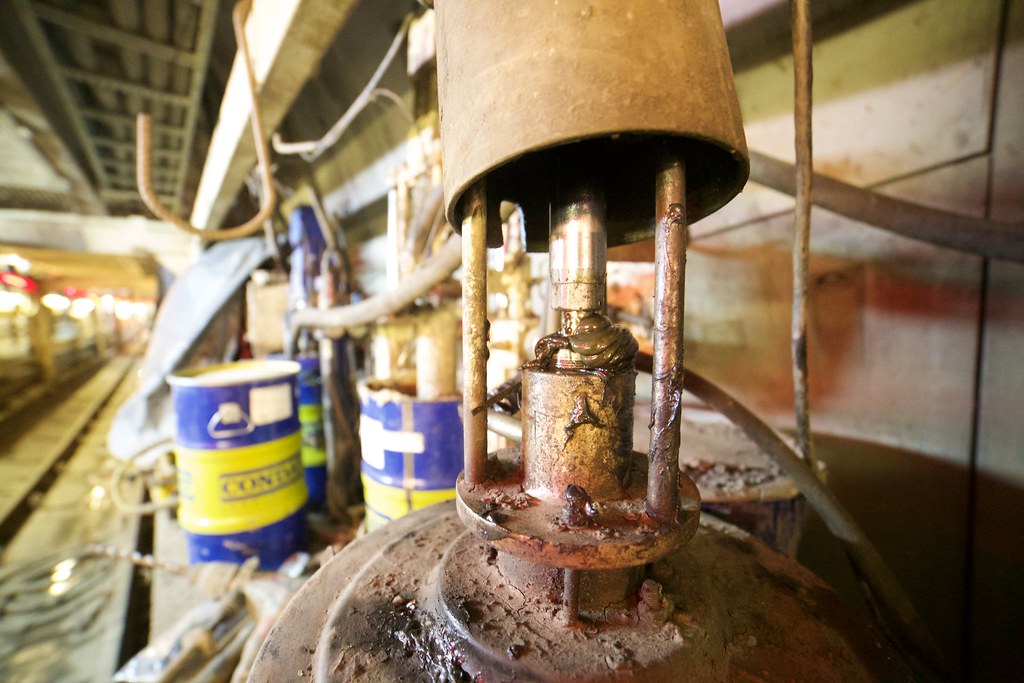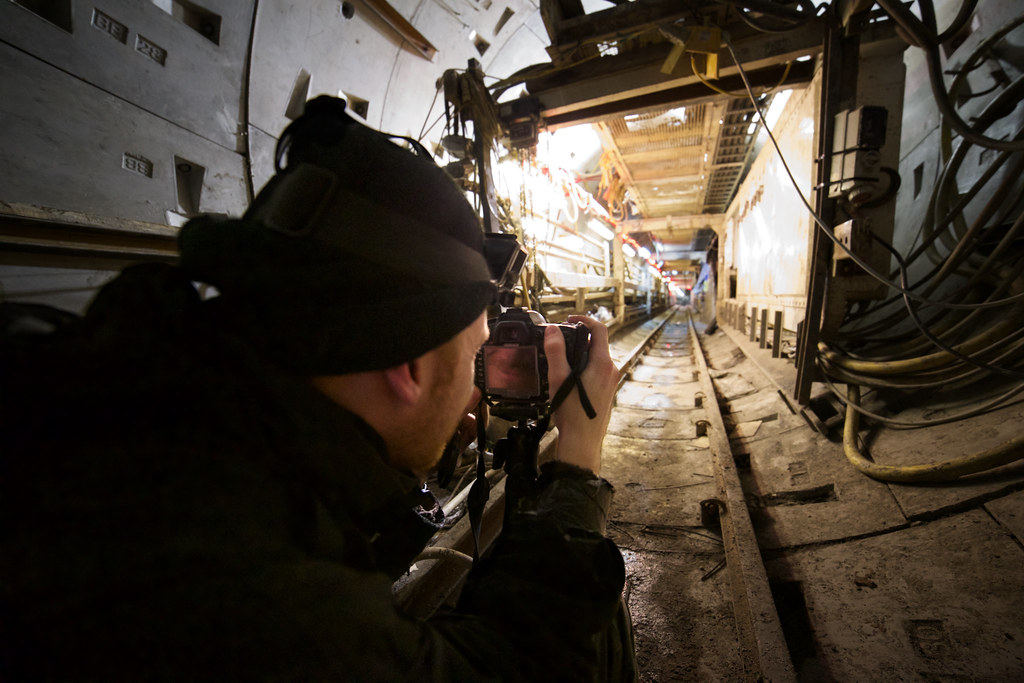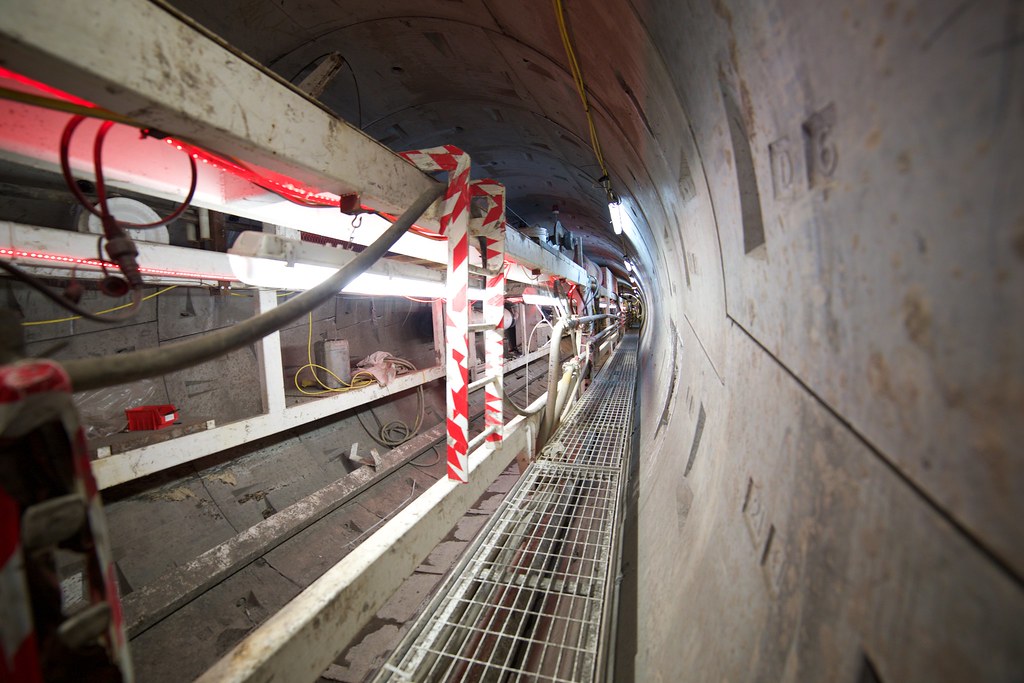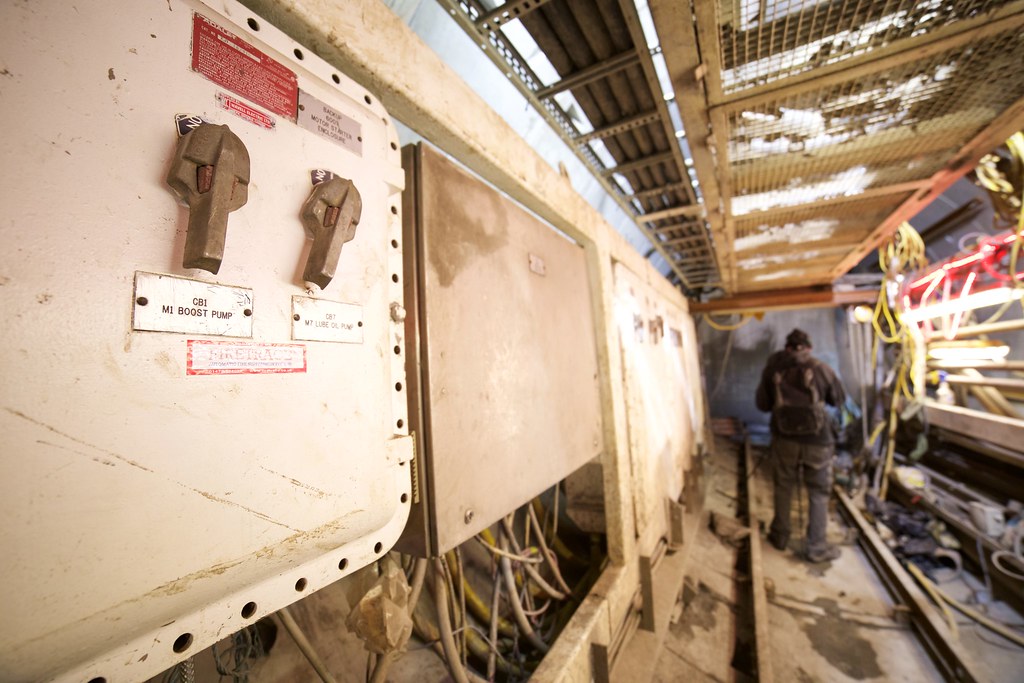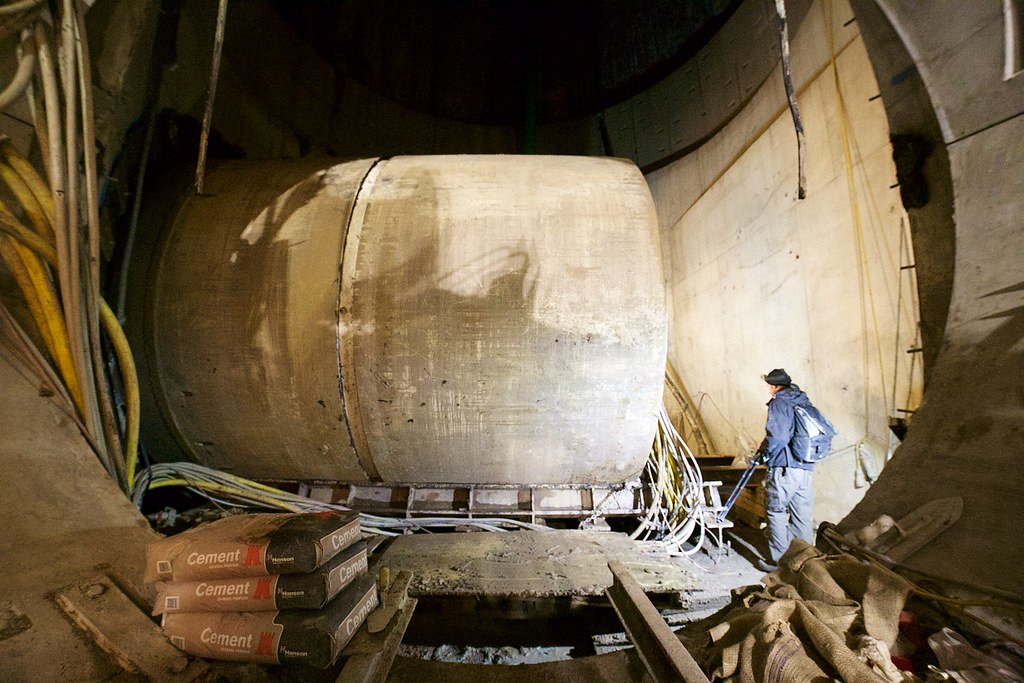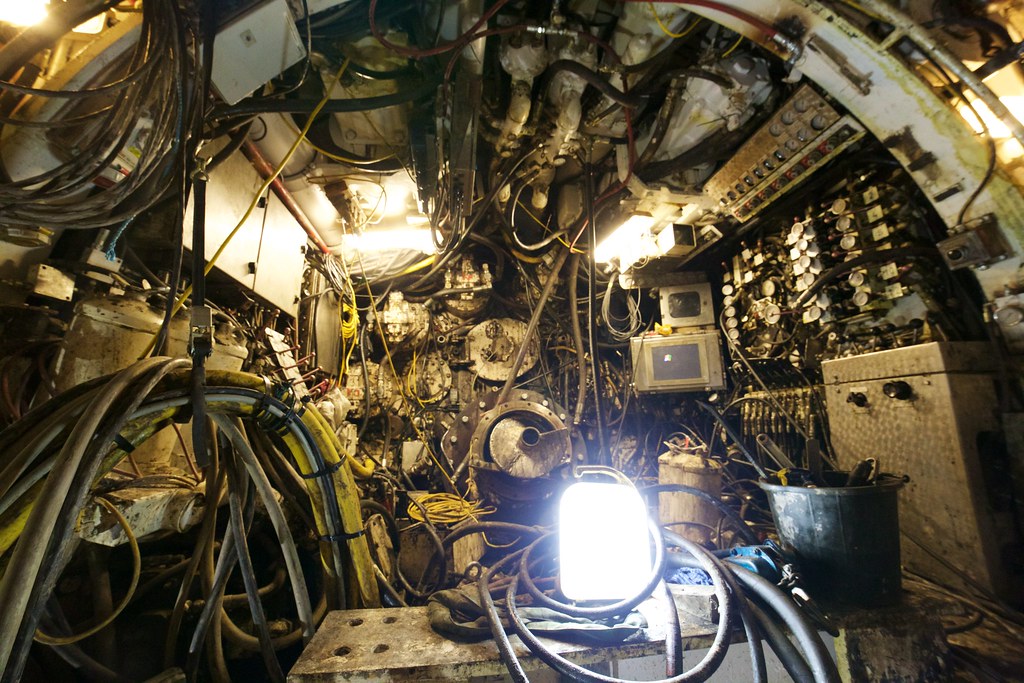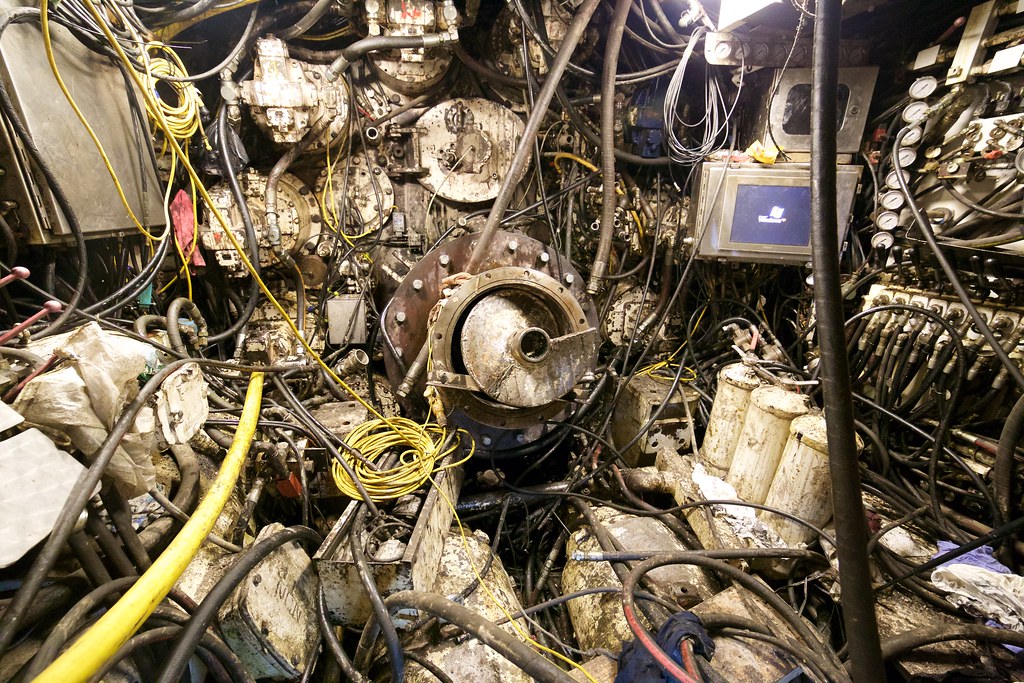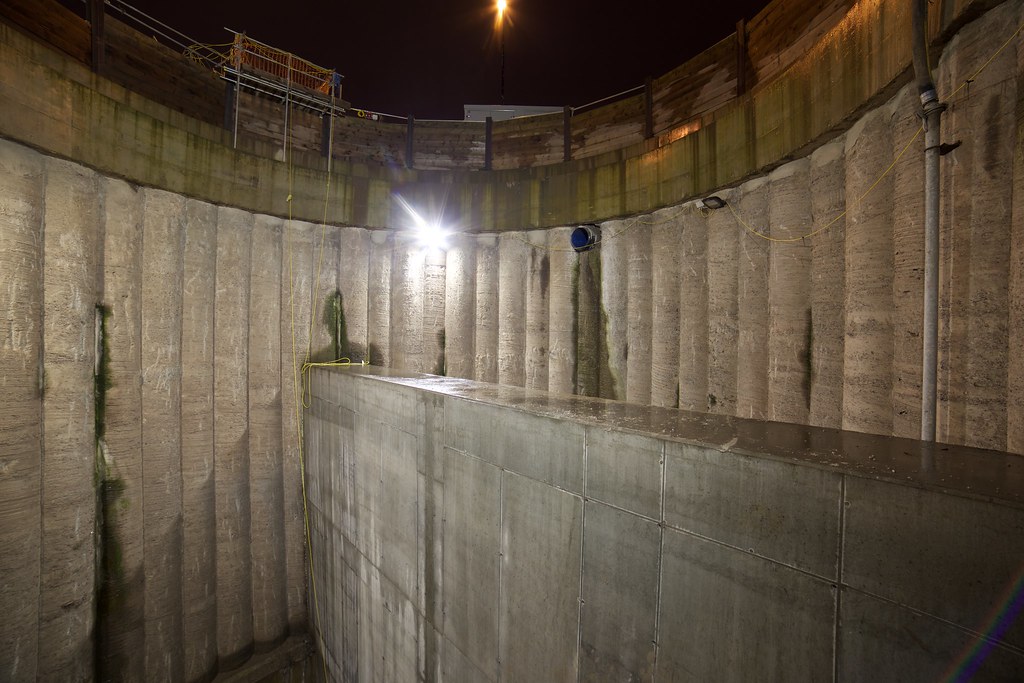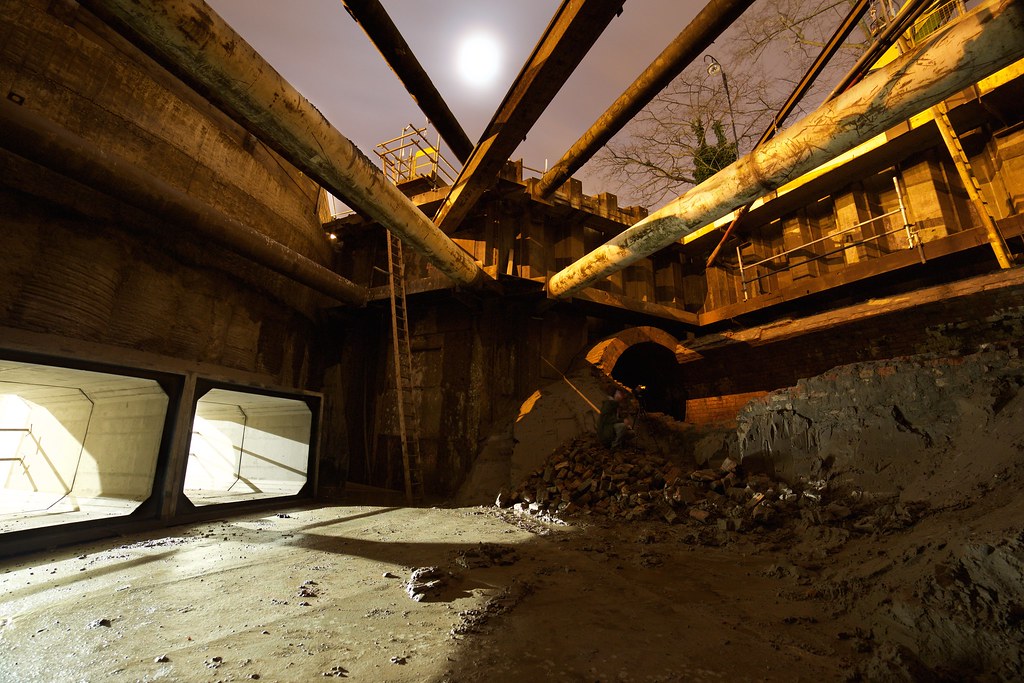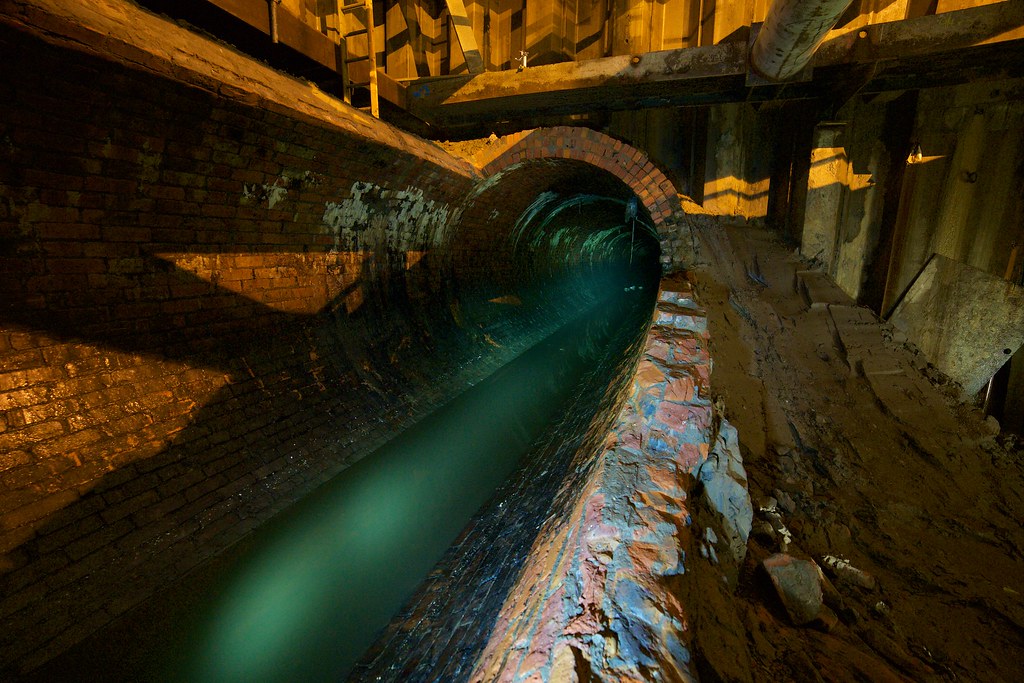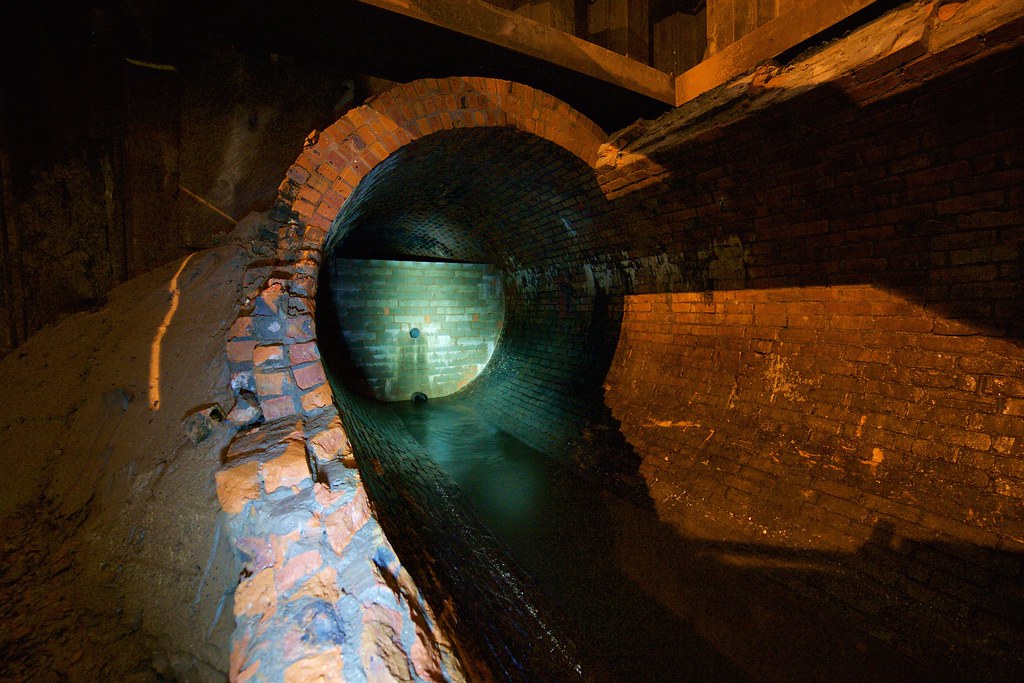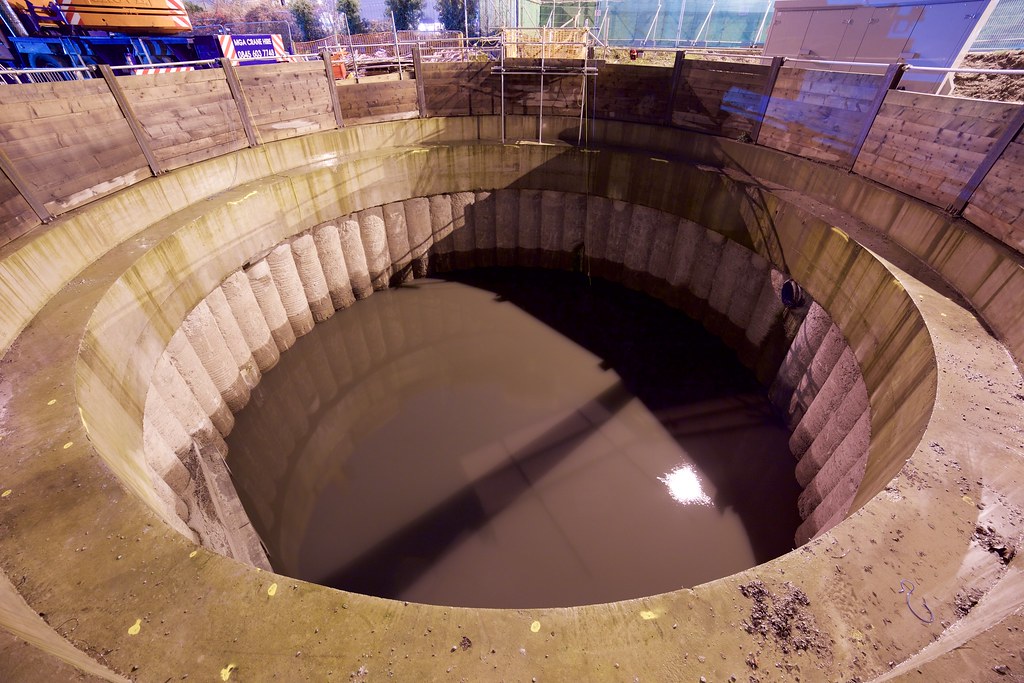Trafford Park is a nexus for Manchester's interceptor network, the two outfall sewers come close together and an overflow to the Ship Canal is provided in the form of Lock Stock. The Victorian/Post War overflow system has served admirably for around a hundred years as the outfall sewers' last overflow before the home run to Davyhulme Works. Lock Stock had no provision for screening; toilet paper, jamrags, hair and everything else that goes down the toilet could overflow straight to the Ship Canal, it was basically the largest UID in Manchester.
United Utilities sought to correct this with a huge construction scheme; a large screening chamber, 3 shafts/detention tanks and a pipe to link them together. Over the course of several visits Theloki & I explored what had been built and nicknamed it after finding the TBM Gloria at the bottom of one of the shafts.
The screening chamber is 32m long, 27m wide and houses 5 diagonal powered screens. It will eventually serve Outfall A, the oldest of Manchester's outfall sewers. At the time we visited the flow had been shoehorned into a temporary pipe, presumably with much of the flow already diverted to Outfall B. Lock Stock's upper overflow was located upstream, the weir would be raised once the new system came online, finally making the old brick chamber redundant.
On our first visit we took photos using only the light cast down from darkened summer sky, the occasional flash of lightning showed the chamber in sharp relief. Not long after the roof was put on and the gleaming processors would rarely see the light of day again.
I've been in screening chambers before and this one looked little different until you got down amongst the concrete structures and realised the huge scale.
Behind the screens to one side was what looked like a large sump to collect flows that didn't make it to the tank, presumably a pump will be installed to empty it back into the sewer.
Through a large partially knocked through doorway was a corridor that would lead to the dropshafts into the tank.
The chamber would eventually be knocked through into shaft 3 which would form the largest detention tank at 33m deep and 21m across.
On the next visit to the chamber it was nearing completion. A small white building had been built over the stairs leading down the the chamber.
From the stairs a passage lead round alongside the chamber and from the window cutouts looked as though it might serve as a viewing gallery one day. A door gave access to the screening chamber behind the processors.
Lighting had helpfully been installed which made seeing the charming green and yellow colour scheme easier.
The outfall sewer was actually overflowing and the processors churning away. A return channel collected solids scraped from the processor screens and washed them back into the sewer at the downstream end of the sewer. Underfoot the large channels and passages we had previously stood in now filled with stormwater.
The area surrounding S3 is home to many businesses, some involved in food production. An odour control facility was built to filter air coming out of the system (from ventilation and water displacement) and vent it via a tall stack.
The shafts themselves were rather impressive and we got to see them in their freshly built state before they got coated in Manchester's finest.
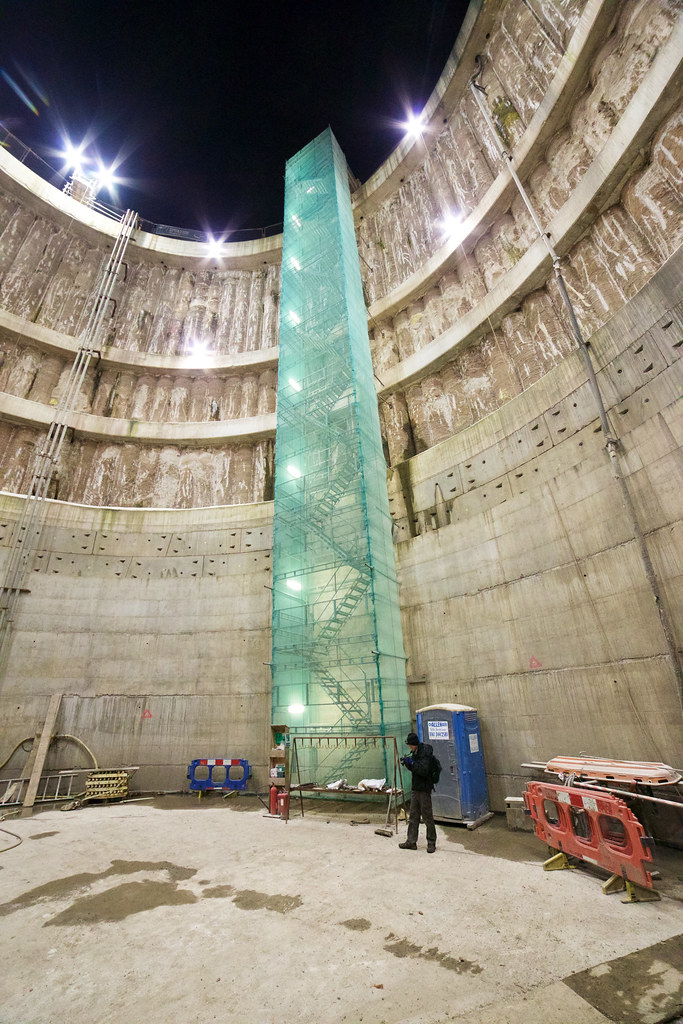
We walked down the 3.6m pipe between the tracks used to convey new tunnel segments to the ever hungry Gloria, in the distance came a humming noise and red glow. It turned out to be the support framework for the TBM and oddly a load of red rope light. We walked under the deep hum of a 3.3Kv transformer and past all manner of tools and machinery.
We had seen segments of the TBM lying around at the top of shaft 2 which had been taken topside. At the bottom lay the business end just starting the next drive to shaft one. Full of hydraulics, gauges, high voltage electronics and the brain running on Windows XP was Gloria's big steampunk-esqe head.
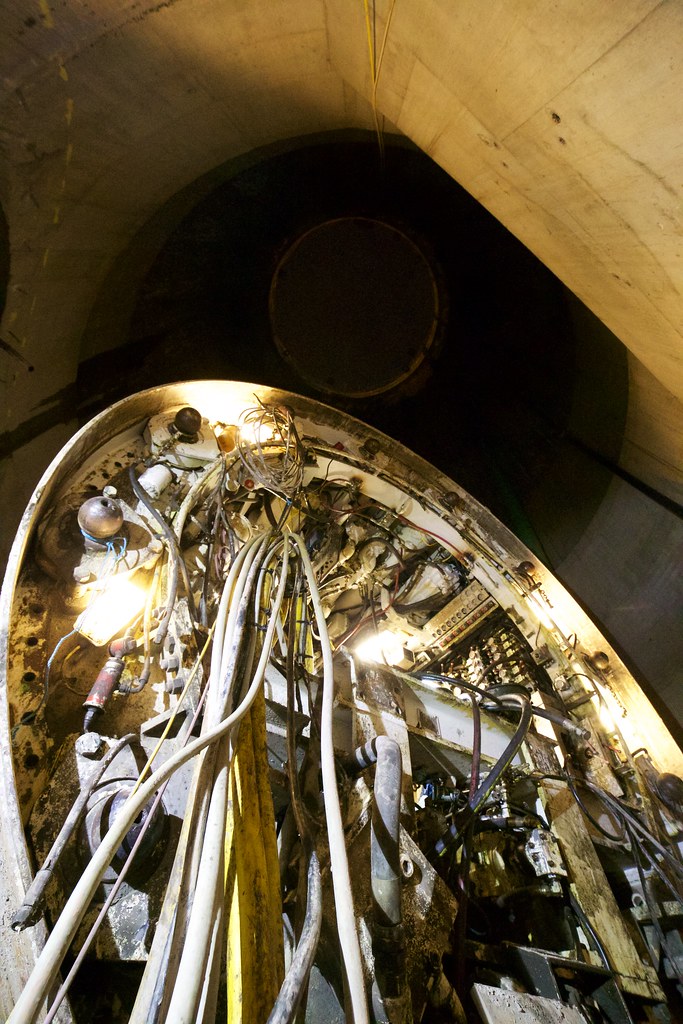
After it's drive to S1 was complete Theloki went back to get a look at Gloria's teeth.
The system will store 17,800 cubic meters of stormwater. Despite the UU docs saying there would be 3 tanks, S2 was only used as a construction shaft and sealed up from below. Each of the two tanks should fill up evenly until they reach capacity. S3 is the deepest and it makes sense for a pump to be installed at the bottom to empty the stormwater back into the outfall sewer. When full the whole lot acts as a big inverted siphon with spills entering the 1890s overflow culvert just downstream of lower Lock Stock's overflow chamber.
A view of the partially dug out chamber at S1 that will link back into Lock Stock.
A view months later the chamber was deeper, the overflow culvert had been broken into and a connection to the tank made. The tank itself had a large wall built across it with a valve at the bottom which formed part of the cleaning system.
The connection chamber has now been squared off, covered over and another vent stack stands guard nearby.
For us the adventure was over, the land above landscaped and the people of Trafford Park probably once again oblivious to the tonnes of water shifting around below their feet.
